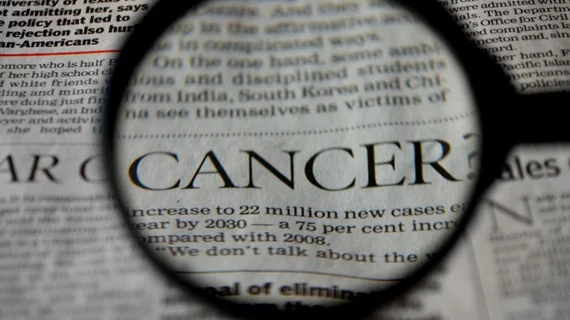Nanoplatform uses 3 imaging modalities to detect solid cancers
Researchers at the Complutense University of Madrid (UCM) in Spain have developed a “hybrid nanoplatform” that simultaneously uses three different imaging modalities—MRI, CT and fluorescence optical imaging (OI)—to detect solid cancers. Their findings were published in ACS Applied Materials and Interfaces.
"No single molecular imaging modality provides a perfect diagnosis,” said lead researcher Marco Filice, PhD, of the dDepartment of chemistry and pharmaceutical sciences at UCM, in a prepared statement. “Our nanoplatform is designed to enable multimodal molecular imaging, thus overcoming the intrinsic limitations of each single image modality while maximizing their advantages."
Filice and colleagues’ research is designed to provide a medical diagnosis with one imaging session, yielding “more precise, specific results with higher resolution, sensitivity and capacity to penetrate tissues.”
The researchers conducted their study on mice using nanoparticles with two sides—one side is iron oxide embedded in a silica matrix, the contrast for MRI, and the other side is gold acting as the contrast for CT.
“In addition, a molecular probe sited in a specific manner in the golden area permits fluorescence optical imaging while a peptide selective for hyper-expressed receptors in tumors (RGD sequence) and sited on the silica surface enveloping the iron oxide nanoparticles identifies the tumor and makes it possible to direct and transport the nanoplatform to its target,” the statement read.
The researchers synthesized the nanoparticles, assessed their characteristics and toxicity levels and injected them into the mice's tails to identify fibrosarcoma in their right leg. Filice et al. determined their process provided “excellent” imaging results for each modality.
Filice noted that their research still needs more testing before it is applied in humans, but he believes the nanoplatform is promising and, because of its flexibility, it will be able to detect more cancers in the future.

